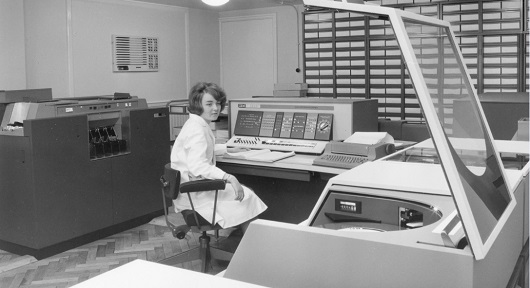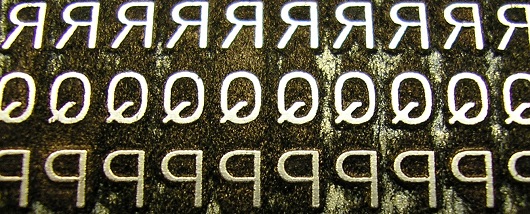Plugging St Andrews in

Marking 50 years since the first computer was brought into service by the University of St Andrews in the town itself, a small exhibition charting the changes in this now ubiquitous technology will open at the Byre Theatre on Thursday 1 October.
The first computer – an IBM 1620 Model II – was the largest system of its kind in Europe and it occupied an entire air-conditioned room within the University’s observatory. Valued at £135,000 in 1965 but purchased for £60,000, it cost around the same as a small housing estate at the time and was the result of more than a year of negotiations and planning.
The enormous machine was run around the clock, managed by the Department of Astronomy and trained operators.
While the capacity of the IBM 1620 is minute by modern standards, the computer was advanced for the time and played an important role in the development of computing in St Andrews.
Records from the time show that the computer was in use over 400 hours per month. Courses were held on programming and seminars were given by University staff who had made use of results from the computer. It was able to churn through extensive calculations and was most in demand by staff and researchers studying astronomy, applied mathematics, botany, chemistry, physics and theoretical physics.
Peter Adamson, retired Computing Officer from IT Services at the University of St Andrews, has worked with Roger Stapleton, Honorary Scientific Officer from the School of Physics and Astronomy, to gather together items for display.

These include elements from the first computer and its early successors like the BBC Micro and Commodore PET, along with documents – such as the 1961 letter from the late Professor Douglas Walter Noble Stibbs to the then Principal, Sir Thomas Malcolm Knox, putting forward the case for purchasing the 1620.
An array of objects and images from the 60s and early 70s show what life was like in what was then called the Computing Laboratory, including heavy hand-cranked calculators, a large steel printer roller covered in embossed symbols and lettering, and early punched cards, which served to input programs or data into the computer.
Mr Adamson said: “In 1965 the first computer service within St Andrews revolutionised our work. The equipment required careful programming and weekly engineering maintenance but we were now able to process enormous amounts of data locally instead of taking it elsewhere.
“I have fond memories of working with these early computers, and of course I enjoyed it when enterprising users made the IBM 1620 graph-plotter hum Christmas carols, or created a 3D noughts and crosses game. Due to a bug, the computer always won!”
Swift advances in technology and increasing workload meant that a replacement computer was installed in 1969. This IBM 360/44 was specially tailored for scientific use. It enabled computer programs to run 60 times faster than the 1620 model, and it had a central processor with a respectable 128K bytes of memory – dwarfed by today’s smart phones.
The First Computers in St Andrews will run at the Byre Theatre in St Andrews from 1 to 31 October, opening to the public with a free event on 1 October at 6.30pm and offering exhibition-goers the opportunity to see the exhibition first and meet Peter Adamson and Roger Stapleton.
Notes for news editors
Photo credit (top): Alex Coupar. Peter Adamson and Roger Stapleton are available for interview. Please contact the Communications Office.
Issued by the University of St Andrews Communications Office, contactable on 01334 462530 or [email protected].
Category University news